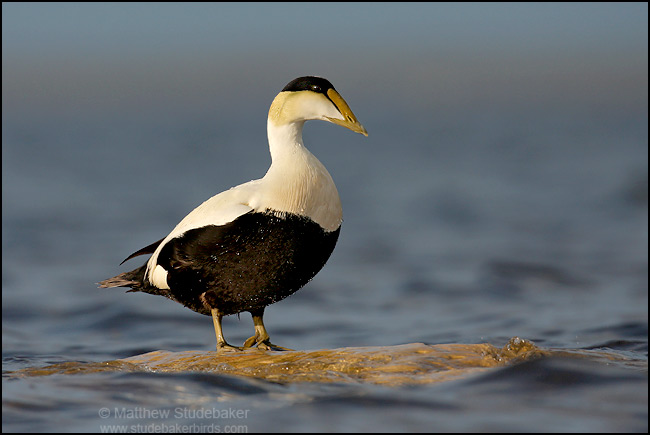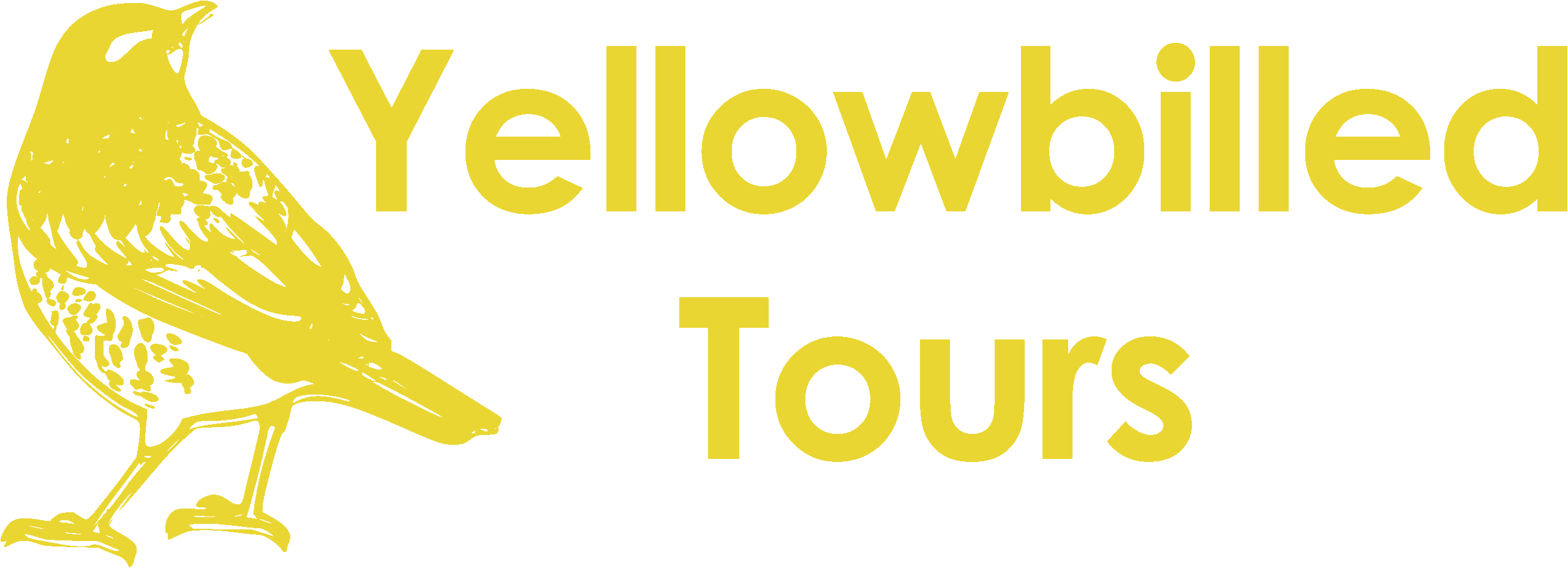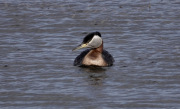Alaska Nome Arctic | June 1st, 2024
Yellowbilled Tours uses Nome, a frontier town of nearly 4000 residents, as a base camp for your field trip. Nome is accessible only by ship and airplane, bordered on the West and South by the Bering Sea, and the North and East by miles of trackless wilderness.
Nome is a fascinating and challenging destination. During late May, June and July, the sun is at its brightest into the late evening, the tundra is in full bloom, and the birds have begun arriving to nest. Mammals are active also building up fat for the winter ahead. You may see Muskox, Moose, Reindeer herds, arctic fox and bear.
Our tour will cover the prime birding areas along the coast plain, including the length of Safety Sound Lagoon and Wooley Lagoon with beautifully blooming inland alpine tundra, rivers, and the wetlands surrounding Nome. We will also spend time birding our way to the boreal spruce forest towards the town of Council. Most of the birds are in their striking, fresh breeding plumages—rarely if ever seen in the lower 48. We make an extra effort to locate some of the accidental Asian species—such as Bluethroat, Yellow and White Wagtail, Arctic Warbler, Northern Wheatear, Snow Bunting, Gray-tailed Tattler (seen on a 2006 YBT trip)—that regularly occur at Nome.
I began birding the Nome eco-region in 1998. I have been leading small-group birding trips to Nome’s eco-region since 2002. My trips include wildlife watching as well, providing a relaxed experience. We stay on the bird until everyone has a chance to observe it. At each sighting, we take time for birders to collaborate using the available field guides. Our visit will not be a high-speed tour with no time for field collaboration or in-town Nome cultural experiences.
The field trips are limited to 6 birders to maintain comfortable spacing for a small-group which Yellowbilled Tours has established for Nome. The vehicle used is a comfortable modern vehicle, that allows each birder a speedy and comfortable entrance and exit and plenty of window viewing area. This vehicle allows comfort and convenience on the rough, unpaved roads.
The small group will provide you a comfortable and very personalized birding experience. Our lodging is a modern motel with clean rooms and private baths. The weather will be mild for Nome—ranging from 30 to near 60 degrees—but will require layers of clothing for maximum comfort.
Birding Nome and Barrow Alaska you might ask, What Is Tundra?
Covering an estimated 10 percent of Earth’s surface, primarily in the Northern Hemisphere, tundra occurs in polar and alpine (mountainous, high elevation) areas. In both situations, cold temperatures, strong winds, snow cover, and short growing seasons result in open landscapes that give the biome its name, which is derived from the Sami word tūndar, meaning “treeless hill.”. The following is from the Spring 2022 “Changing Tundra and What It Means for Birds” from the (American Bird Conservancy https://abcbirds.org/blog/changing-tundra-impact-on-birds). Permafrost, perennially frozen soil, is a ubiquitous feature in these areas, and in place of trees, tundra regions are rich in dwarf shrubs, grasses, herbaceous plants, mosses, ferns, and lichen. Within North America, Arctic tundra covers northern Alaska, Yukon, the Arctic islands of Canada, portions of the mainland of the Northwest Territories, Nunavut, and northern Quebec. The terrain across this broad mantle of land is highly variable, ranging from vast plains, rolling lowlands, and ice-covered lakes to flat-topped mountains and snow-free uplands. Expansive wetlands are common, particularly in shield or bedrock regions of eastern and central Canada. The North American tundra is the homeland of many Indigenous peoples, including the Aleut, Yupik, and Inupiat in Alaska, and the Inuit (Inuvialuit) in Canada, who depend on healthy populations of fish, mammals, and birds for subsistence harvesting. Bird populations are particularly abundant there, especially during productive summer periods, when more than 135 species breed across North American tundra. (Across the world’s Arctic region, the figure may reach 200 species.) Geese and shorebirds often dominate tundra bird communities, but other representative species include Yellow-billed and Red-throated Loons, Long-tailed Duck, King Eider, Peregrine Falcon, Parasitic Jaeger, Willow and Rock Ptarmigans, Hoary Redpoll, Lapland Longspur, and Snow Bunting.
Trip Details
Start date:
June 1, 2024
End date:
June 4, 2024
Destination:
Alaska Nome Arctic



